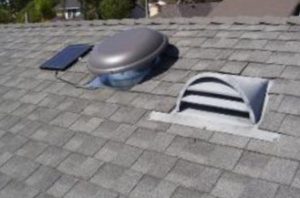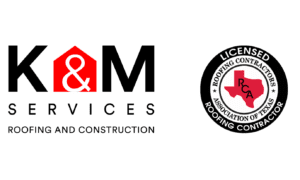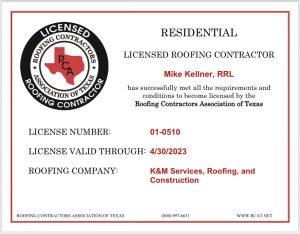How to Understand if Your House’s Roofing in DFW is Equipped with Proper Ventilation?
When it comes to our houses’s roofing in DFW, our concerns mostly surround its repair and maintenance. To that regard, we keep an eye out for the materials used to build our roof, its installation, durability etc. However, we put scant focus on ensuring proper ventilation of roofs, even though it is one of the most crucial architectural aspects involved in a house’s design.
So why is ventilation in DFW roofing so important, to begin with?
The underlying objective of ventilation is facilitating unobstructed airflow. It takes place both through channels of intake and exhaust. It is this process of ventilation that goes on to ensure the longevity of a roof, indoor temperature management alongside escalation or reduction of energy costs, as the case may be.
Nonetheless, before proceeding further with the importance of ventilation or signs that we should look out for in terms of airflow obstruction, let us take a look at how DFW roofing ventilation actually works.

How does DFW Roofing Ventilation Work?
While there are various processes to facilitate roof ventilation, the main system includes easing passage of air through the attic. Airflow is crucial here, and it can be introduced both through natural and mechanical means.
The natural process involves implementing principles of stack effect and wind effect. In the stack effect, hot air rises up, leading to creation of pressure at high points in an attic. Hot air, subsequently, is released through an exhaust. However, this hot air will only be pushed out if there is an inlet for entry of cool air. In the absence of this intake, hot air cannot be flushed out effectively.
On the other hand, the function of wind effect is to bolster the volume of exhaust and intake, when it blows against the exterior of a roof. It is this exhaust and intake that facilitates natural airflow, leading to the creation of a properly ventilated attic.
While this is sums of the method of natural ventilation, the mechanical process involves a power source to operate the intake and exhaust vents.
Now that we have an idea about these methods of enabling air ventilation in a roof let us understand why this process is so crucial for every house.
- Control of indoor temperature
More often than not, there happens to be temperature extremes existing within a house.
Ask yourself this, how many times have you found that as you move upstairs, the indoor temperature keeps rising in good measure?
How many times have you experienced that your room’s floor is quite cold even though temperature inside may be moderate?
Poorly ventilated roofs lead to such extreme temperature points at different areas in a house.
- Reducing energy costs
If the temperature soars inside your house, air conditioners or coolers have to be installed to control the stifling heat of Texas summers. It will invariably lead to a significantly steep electricity bill. On the contrary, a well-ventilated roof will allow this trapped heat to move out efficiently.
- Ensuring roof longevity
Build-up of icicles or ice damming wreaks havoc on the roofs and may cause immense damage. Such accumulation happens when the heat within the attic combined with that from the sun melts ice on the relatively warm roof. As the water flushes out through the roof edge, it refreezes and thereby, ends up creating icicles. These icicles damage the entire roof system of a house.
The only way to resolve these above-mentioned issues is to ensure that your roof is well-ventilated.
How to Gauge the Effectiveness of Ventilation for a DFW Roof?
Now, despite measures that have been taken, how do we know that the roof is properly ventilated? The answer is simple. If the signs mentioned below are not present, then there is sufficient ventilation.
- Leaky roofs along with presence of mildew or mold
As explained before, poor ventilation can destroy the roof and cause it to be exposed to further damage from water. Such roof leakages and excess water accumulation may lead to the growth of mold or mildew, causing the damage to extend to the ceiling and walls.
- Pests
Roof ventilation problems can damage siding or gutter, which would again allow pests to find a way inside the house. Whether it is tiny insects or rodents, crevices, cracks or small holes will be enough to provide a passage for such pests into your home.
- Creation of ice dams
When snow accumulates over a roof, ice dams can form, leading to the creation of enormous pressure. At the same time, on melting it will run through the edge of the roof and refreeze to form icicles. This freezing of running water invariably indicates the faulty roof ventilation and can be deeply damaging to the entire house.
Now that we know the signs for understanding whether a roof is well-ventilated or not…
What kind of ventilation systems should be installed on your home’s roof in DFW TX?
There are multiple options that homeowners can choose from –
- Ridge vents can be placed on top of a roof, beneath shingles.
- Wind turbines affixed on the exterior of a roof can blow out the hot air.
- Power attic ventilators are suitable where there is not much circulation of natural wind.
- Box vents are fairly common among different roofing ventilation systems.
There are, thus, a plethora of options to choose from to ensure that your house’s roof is properly ventilated. However, the make of a house, prevailing weather conditions, alongside the roof’s build will have to be taken into consideration while deciding on the type of ventilation system to be installed.



